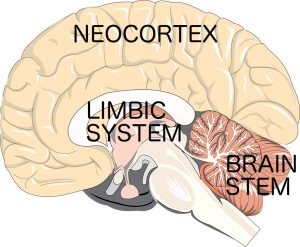[Part 3 in this 3-part Series]
In my last 2 blogs, I have outlined a clear roadmap and template to help you be successful and reduce your stress when working with couples. There are many approaches to couples therapy, so I’ve been sharing how the transformation from a good couples therapist to an exceptional couples therapist happens. It involves both sound theory and good guidance. I have done it myself, so I know it’s possible. I’ve studied and integrated the Bader-Pearson model of couples therapy for nearly a decade, and transformed my skills as a couples therapist. You can too!
In this third and final blog post in the series, I want to stress how the use of neuroscientific findings can help you both stay calm in tough situations and become a reliable means for getting more traction in your work.
How Neuroscience Helps Couples Therapy
According to John Gottman, couples wait about 6-7 years too long before coming for help. Many people wrongly assume they should be able to do it themselves – that ‘getting along’ should come naturally. Our popular culture reinforces this fairy tale. When it gets hard, partners cycle in and out of painful interactions, too embarrassed or too embittered to ask for professional help. Most couples will get their car fixed faster than their relationship. I am hoping we can begin to change that culture.
 Couples trigger each other in a unique way. This is because the primary attachment relationship in adulthood stirs up and activates early attachment experiences. I believe this is what Esther Perel is referring to when she says, “Tell me how you were loved as a child, and I will tell you how you love.” If everything went well and we felt securely cared for and valued by our parents, there is a high probability we will recreate that with a loving partner in adulthood. But for too many couples, they are playing out the painful disappointment chronically encountered in early childhood abuse and/or neglect.
Couples trigger each other in a unique way. This is because the primary attachment relationship in adulthood stirs up and activates early attachment experiences. I believe this is what Esther Perel is referring to when she says, “Tell me how you were loved as a child, and I will tell you how you love.” If everything went well and we felt securely cared for and valued by our parents, there is a high probability we will recreate that with a loving partner in adulthood. But for too many couples, they are playing out the painful disappointment chronically encountered in early childhood abuse and/or neglect.
The Triune Brain
To understand how this takes place, it helps to know a little about the brain and nervous system. Humans are born with automatic responses to potential threats called instincts, much the same as almost every other animal on the planet. These reactions are most often known as the 3 F’s, or our fight/flight/freeze instincts.
Our brainstem is the oldest part of our brain, and can be thought of as the ‘reptilian’ brain. Our most basic and automatic functions for self-preservation reside here. The ‘alarm’ that alerts us to danger fires the signal so rapidly that partners have already said and/or done harmful things, before they even know what has happened. Think of what occurs when you poke an alligator with a stick – a lightning-speed response, invoking terror in anything nearby. The survival strategy in this part of the brain to overwhelming threat is the freeze response. This dorsal vagal response has the effect of leaving individuals vulnerable to repeated abuse and neglect, via the ir inability to self-activate.
ir inability to self-activate.
The next major part of the brain, sitting above the brainstem, is the limbic system. This is also referred to as the ‘mammalian’ brain. This is where the amygdala resides and where fear is stored. This crucial part of the brain registers all painful experiences, both physical and emotional. Since our brains are underdeveloped at birth, early experiences literally shape us. When these have been difficult, our amygdales are on high alert, and are constantly triggered into a fight or flight response.
Understanding these two parts as the ‘survival’ brain, helps to explain partners reactivity to one another. I will say more about that below.
The third part of the brain is the neocortex, found at the top and front of the head, is only found in humans and some primates. This part of the brain, including the pre-frontal cortex, applies reason, logic, creativity, and problem-solving. It manages impulses and is where relational circuits are formed. This part of our brain allows us to assess a situation, strategize, and use ‘higher order’ reasoning to manage our fear. It also tells us about our place in the world, our intrinsic value vis-à-vis those around us. When online, it helps us to thrive rather than just survive. According to Stephen Porges, this is the top of the hierarchy in the nervous system, where we can stay ‘socially engaged’ even during stressful events, keeping us connected to others.
Couples Trigger Each Other’s Amygdala
This is where the trouble begins. Once the bliss of symbiosis fades and the real challenges of creating a healthy, meaningful relationship set in, partners are hijacked by the emotional baggage stored in their limbic brains. Some partners start fighting and others get increasingly more distant. Both re-enact painful memories of early bonds with parents who were unwilling or unable to value and validate their basic worthiness.
How to Target Interventions to Calm the Amygdala
Helping couples understand how they get hijacked is critical. It helps them understand that it is not their fault and that they are not deliberately trying to hurt one another. They are just wired that way. With our help, they can learn how to rewire, both autonomously and collaboratively. Here are a few suggestions to get started:
| 1. Name It to Tame It
Educate couples about the survival brain. Let them know that bringing conscious awareness to their ‘triggers’ is the first step in change. If they can begin to |
| 2. Separate Past from Present Remind partners that ‘trigger’ by definition means an emotionally charged memory ‘from the past.’ Assist them in coming into the present moment and noticing the absence of threat. Help them stay curious about the fact that they are safe in the present, while their bodies are telling them they are unsafe and preparing for fight/flight/freeze. Staying in conscious awareness allows the neocortex to stay online, thereby dampening the charge in their amygdala. This helps to untangle past defensive responses from their current desire to stay connected, even under stress. |
| 3. Soothing Self and Other
Holding individuals accountable for their reactivity is a key and distinctive feature of the Bader-Pearson developmental model. Helping partners learn how they can calm themselves through soothing self-messages, by self-care activities, by reality-testing with partners in real time, and by reaching out for comfort when distressed. These are essential in interrupting traumatic patterns, and place the onus on each person to work hard on their own change. By helping couples identify and work through traumatic bonds from their past, each develops a deepening compassion for their other. This creates a willingness to arrest and/or avoid behaviours and interactions that they know will stimulate pain in the other. Each person becomes more attuned to the other, and more ‘giving’ in the best of ways, allowing the environment to be one that is more consistently soothing overall. This promotes growth in a way that is impossible to achieve if either of them are in a defensive state of fight/flight/freeze. |
Training to Integrate Neuroscience for Greater Effectiveness
This is just a small token of what can be accomplished using neuroscience in our work with couples. The good news is that there are a host of interventions included in the Bader-Pearson training, that directly target these reactive states. I am going to be sharing so much more during the upcoming training which starts January 13th, 2017. Therapists who take the Bader-Pearson Developmental Model training have often studied other models as well. They find this training so helpful because they are integrating important components that were missing in other approaches. New couples therapists report a confidence based on what they believe is the best in the field and are ready to take on this new area of expertise. This training is only offered locally once per year, and the class is kept small for training purposes. I will be letting you know how you can join the training at the end of the month, so be sure to watch for this offer.
 In the meantime, I wish you a wonderful Holiday full of love and laughter.
In the meantime, I wish you a wonderful Holiday full of love and laughter.
Until next time,

 what emotions are being stimulated by their interactions, but instead are internalizing and isolating, resulting in a build-up of negativity between them.
what emotions are being stimulated by their interactions, but instead are internalizing and isolating, resulting in a build-up of negativity between them.



 Taking Time to Look Within
Taking Time to Look Within Here’s what happened.
Here’s what happened.



